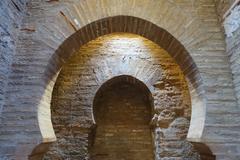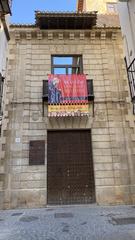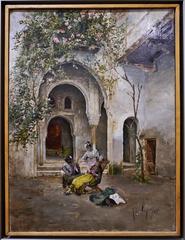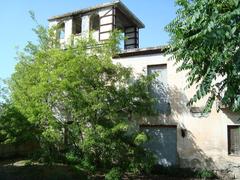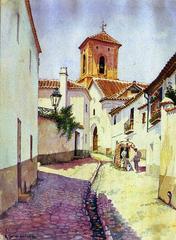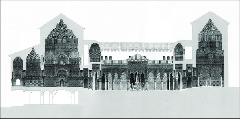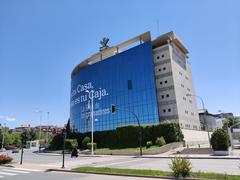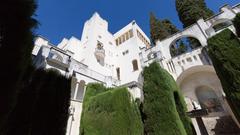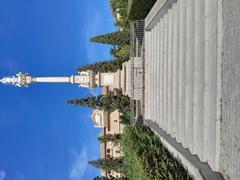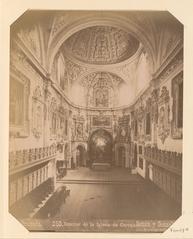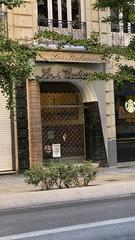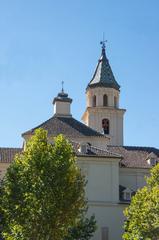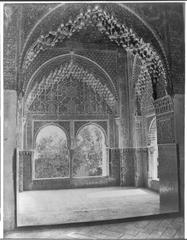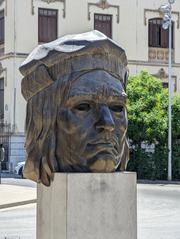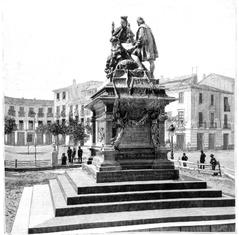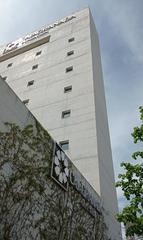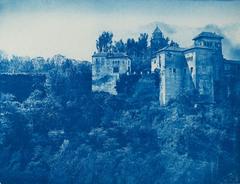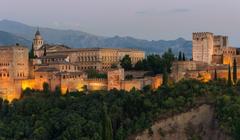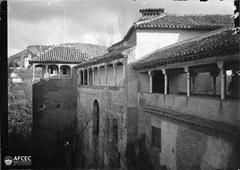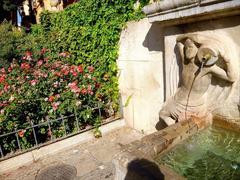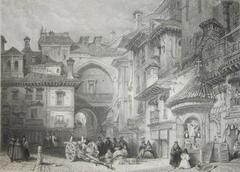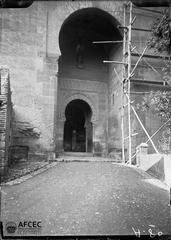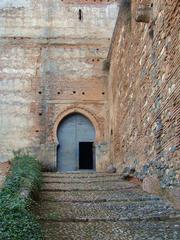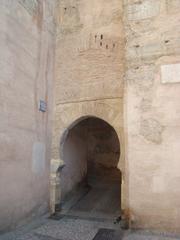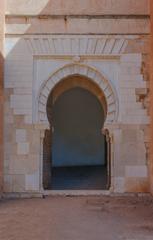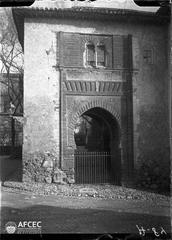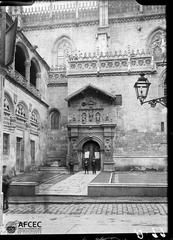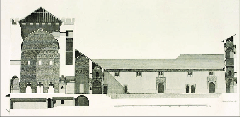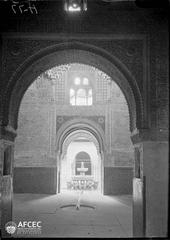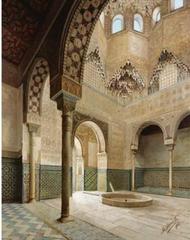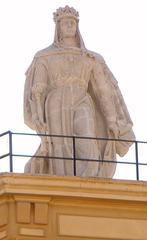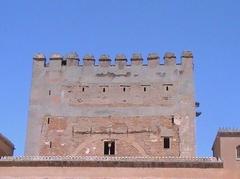Sierra Nevada Observatory Visiting Guide
Granada Historical Site Information
Date: 14/06/2025
Introduction
Perched at 2,896 meters above sea level in the heart of Spain’s Sierra Nevada National Park, the Sierra Nevada Observatory (Observatorio de Sierra Nevada, OSN) is continental Europe’s highest professional optical observatory. Operated by the Institute of Astrophysics of Andalusia (IAA-CSIC), OSN offers an exceptional blend of advanced astronomical research and immersive visitor experiences. With its clear, dark skies and location in a UNESCO Biosphere Reserve, the observatory is an essential destination for astronomy enthusiasts, nature lovers, and curious travelers alike. This detailed guide provides all the essential information on visiting hours, tickets, accessibility, travel, and nearby attractions to help you plan a memorable trip.
For the latest updates, event details, and reservations, visit the official websites: sierranevada.es and osn.iaa.csic.es.
Table of Contents
- Historical Background
- Visitor Information
- Nearby Attractions
- Public Engagement and Education
- Travel and Accessibility
- Frequently Asked Questions (FAQ)
- Practical Tips for Visitors
- Summary and Final Tips
- Sources and Official Links
Historical Background
Origins and Scientific Evolution
The Sierra Nevada Observatory was established to take advantage of the region’s exceptional atmospheric conditions—clear skies, low humidity, and minimal light pollution. Since its founding in the early 1980s, OSN has grown into a vital hub for international research, contributing to studies of exoplanets, variable stars, and transient celestial events. The observatory’s scientific infrastructure includes a 1.5-meter Ritchey-Chrétien telescope (T150), a 0.9-meter telescope (T90), and the BOOTES-IR infrared station, supporting both cutting-edge research and public educational programs (Springer Book; Nature Article).
Environmental and Global Change Monitoring
Beyond astronomy, OSN is integrated with the Sierra Nevada Global Change Observatory (OBSNEV), which monitors climate change and its effects on local ecosystems. The observatory’s long-term data collection supports environmental health studies and informs conservation strategies (DEIMS; Nature Article).
Visitor Information
Visiting Hours and Tickets
- Seasonal Access: Public visits are primarily available in summer, typically from mid-July to late August.
- Guided Tours: Tours run on weekdays, usually between 8:00 a.m. and 3:00 p.m. Advance reservation is required.
- Tickets: Book via phone (+34 958 70 80 90, Option 2) or the official website. Tours are limited to small groups.
- Pricing: Some tours are free; others may have a nominal fee. Student and group discounts are often available.
Guided Tour Experience
Professional astronomers and technical staff guide visitors through the observatory’s history, telescopes, and ongoing research. Tour highlights include:
- Visits to telescope domes
- Explanations of research on exoplanets and asteroids
- Live data demonstrations when possible
- Interactive sessions (e.g., solar observations, meteorite samples)
Accessibility
- General Access: The observatory is reachable by car or organized tour from Granada (approx. 30–40 km, 45–60 minutes’ drive).
- Mobility: Due to mountainous terrain and stairs, full wheelchair access is limited. Contact the visitor center in advance for assistance.
- Facilities: Parking available nearby; restrooms and basic amenities on-site.
For up-to-date visitor information, consult sierranevada.es and osn.iaa.csic.es.
Nearby Attractions
Make the most of your visit by exploring the region:
- Granada’s Historic Sites: The Alhambra Palace, Generalife Gardens, and Albaicín district are world-renowned cultural sites.
- Sierra Nevada National Park: Enjoy hiking trails, unique alpine flora and fauna, and breathtaking mountain panoramas.
- Pradollano Village: Offers accommodations, restaurants, and services; base for shuttle tours to the observatory.
Explore more at TourScanner and LoveGranada.
Public Engagement and Education
OSN is committed to public outreach:
- Workshops and Events: Astronomy nights, stargazing sessions, and family-friendly educational programs are held during summer.
- Citizen Science: Participate in environmental monitoring and public data collection projects.
- School Programs: Tailored educational visits for students and teachers.
More details and schedules are available on the official OSN website.
Travel and Accessibility
Getting There
- By Car: From Granada, take the A-395 towards Pradollano; parking is available, but direct access to the observatory is reserved for authorized vehicles or tours.
- By Public Transport: Buses run from Granada to Pradollano; from there, guided shuttles or tours provide access to the observatory.
- By Taxi/Private Transfer: Convenient but more expensive; book ahead.
- Hiking/Cycling: Experienced hikers can reach the site via marked trails, but the altitude and terrain require preparation.
Accessibility Summary Table
| Mode | Route/Details | Duration | Cost | Notes |
|---|---|---|---|---|
| Car Rental | Granada → Pradollano (A-395) | 45–60 min | €30–€60/day | Parking at Pradollano; tour/shuttle required |
| Public Bus | Granada → Pradollano | 38–60 min | €2–€4 | No direct observatory access |
| Taxi/Private Transfer | Granada → Pradollano | 45–60 min | €50–€70 | Book in advance |
| Park Shuttle/Tour | Pradollano → Observatory (guided only) | Varies | Tour-dependent | Only public access to observatory |
| Hiking/Cycling | Pradollano → Observatory | 2–4 hours | Free | Experienced visitors only |
Frequently Asked Questions (FAQ)
Q: What are the Sierra Nevada Observatory visiting hours?
A: Public guided visits are available in summer, typically mid-July to late August, from 8:00 a.m. to 3:00 p.m. Check the official website for updates.
Q: How do I book tickets?
A: Book in advance via phone (+34 958 70 80 90, Option 2) or online at the official OSN site.
Q: Are tours available in English?
A: Most tours are in Spanish, but English tours can be arranged with prior notice.
Q: Is the observatory accessible for visitors with disabilities?
A: Accessibility is limited due to the terrain; contact the visitor center for assistance.
Q: What should I bring?
A: Warm layered clothing, sturdy shoes, sun protection, water, snacks, and a camera.
Q: Can I visit in winter?
A: The observatory is closed to the public in winter due to snow.
Practical Tips for Visitors
- Dress Appropriately: The altitude means cool temperatures year-round.
- Protect Against the Sun: High UV exposure; use sunscreen and sunglasses.
- Bring Essentials: No shops on-site; pack water and snacks.
- Plan for Altitude: Move slowly and stay hydrated.
- Book Early: Tours fill up quickly, especially during special astronomy events.
Summary and Final Tips
The Sierra Nevada Observatory offers a rare combination of scientific discovery and stunning natural scenery. As Europe’s highest professional optical observatory, OSN allows visitors to explore the universe while surrounded by the dramatic landscapes of Sierra Nevada National Park. Plan your trip by booking tickets in advance, packing appropriately for mountain conditions, and considering nearby cultural and natural attractions in Granada. Stay updated with seasonal schedules, special events, and educational opportunities via the observatory’s website and social media channels. Enhance your experience further by using the Audiala app for interactive guides and real-time event information.
Sources and Official Links
- Visiting the Sierra Nevada Observatory: Hours, Tickets, and Historical Insights, 2024, sierranevada.es (sierranevada.es)
- Sierra Nevada Observatory: Visiting Hours, Tickets, and Scientific Insights, 2025, osn.iaa.csic.es (osn.iaa.csic.es)
- Sierra Nevada Observatory Visiting Hours, Tickets & Visitor Guide – Exploring Granada’s Premier Astronomy Site, 2025, TourScanner (tourscanner.com)
- Visiting the Sierra Nevada Observatory: Your Complete Guide to Location, Tours, and Travel, 2025, LoveGranada (lovegranada.com)
- Springer Book
- Nature Article
- DEIMS
- Nature Article (Environmental Data)

